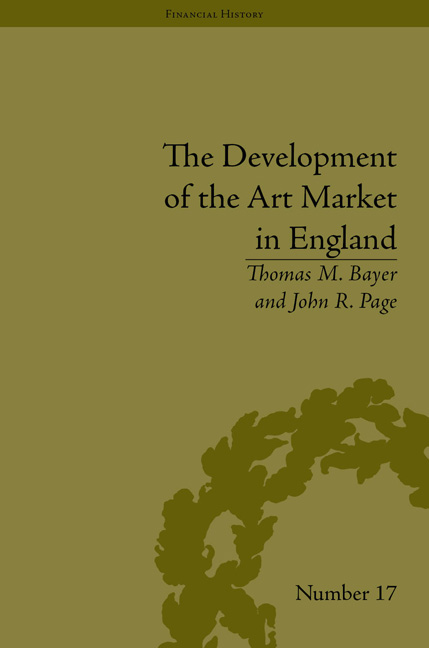Book contents
- Frontmatter
- CONTENTS
- Acknowledgements
- List of Figures and Tables
- Dedication
- Introduction
- 1 The Early Stages: From the Netherlands to Great Britain
- 2 The Commoditization of Theories of Art
- 3 The Painter as Homo Economicus
- 4 Critics and Auctions
- 5 The Evolution of Picture-Dealing
- 6 The Victorian Era
- 7 ‘Working the Oracle’: The Tools of the Trade
- 8 The Formation of a Nexus: A Story of Christie's
- 9 Commoditization and the Artist as Producer: Product Differentiation and the Domestication of Pictures
- 10 The End of the ‘Golden Age’
- 11 Postscript: A Perpetual Innovative Whirl
- Notes
- Works Cited
- Index
3 - The Painter as Homo Economicus
- Frontmatter
- CONTENTS
- Acknowledgements
- List of Figures and Tables
- Dedication
- Introduction
- 1 The Early Stages: From the Netherlands to Great Britain
- 2 The Commoditization of Theories of Art
- 3 The Painter as Homo Economicus
- 4 Critics and Auctions
- 5 The Evolution of Picture-Dealing
- 6 The Victorian Era
- 7 ‘Working the Oracle’: The Tools of the Trade
- 8 The Formation of a Nexus: A Story of Christie's
- 9 Commoditization and the Artist as Producer: Product Differentiation and the Domestication of Pictures
- 10 The End of the ‘Golden Age’
- 11 Postscript: A Perpetual Innovative Whirl
- Notes
- Works Cited
- Index
Summary
To what extent economic considerations were at the root of change in aesthetic theory is impossible to say. In any case, assuming a direct cause-and-effect relationship between these two entities would be an oversimplification of the issue. The transformation within the theoretical discourse on art possessed its own internal dynamic; furthermore, other, external influences contributing to this evolution originated from such diverse areas as political economy, political and moral philosophy, as well as demographic and social changes. Economic concerns of painters seeking to remove restrictive barriers to an unimpeded exchange of art products between producers and consumers were only one of the agents of this change.
Nonetheless, the ambition of native British painters to seize the opportunities offered by an expanding consumer base is central to the structural and institutional developments of the British arts environment. It is to these efforts that such producer-controlled marketing entities as artists’ clubs, private academies, independent exhibition facilities, and copyright protection are indebted.
Contemporary and/or near contemporary writings on the eighteenth-century British art scene share the observation that the dealer-controlled trade in old imported pictures and cheap copies or potboilers – made locally or abroad – thrived throughout most of the period, while the market for original works by native contemporary painters was rather poor. Rouquet blamed the English attitude in general and criticized that they ‘amuse themselves pretty much with the arts, without paying any great regard to the artist’.
- Type
- Chapter
- Information
- The Development of the Art Market in EnglandMoney as Muse, 1730–1900, pp. 41 - 70Publisher: Pickering & ChattoFirst published in: 2014



